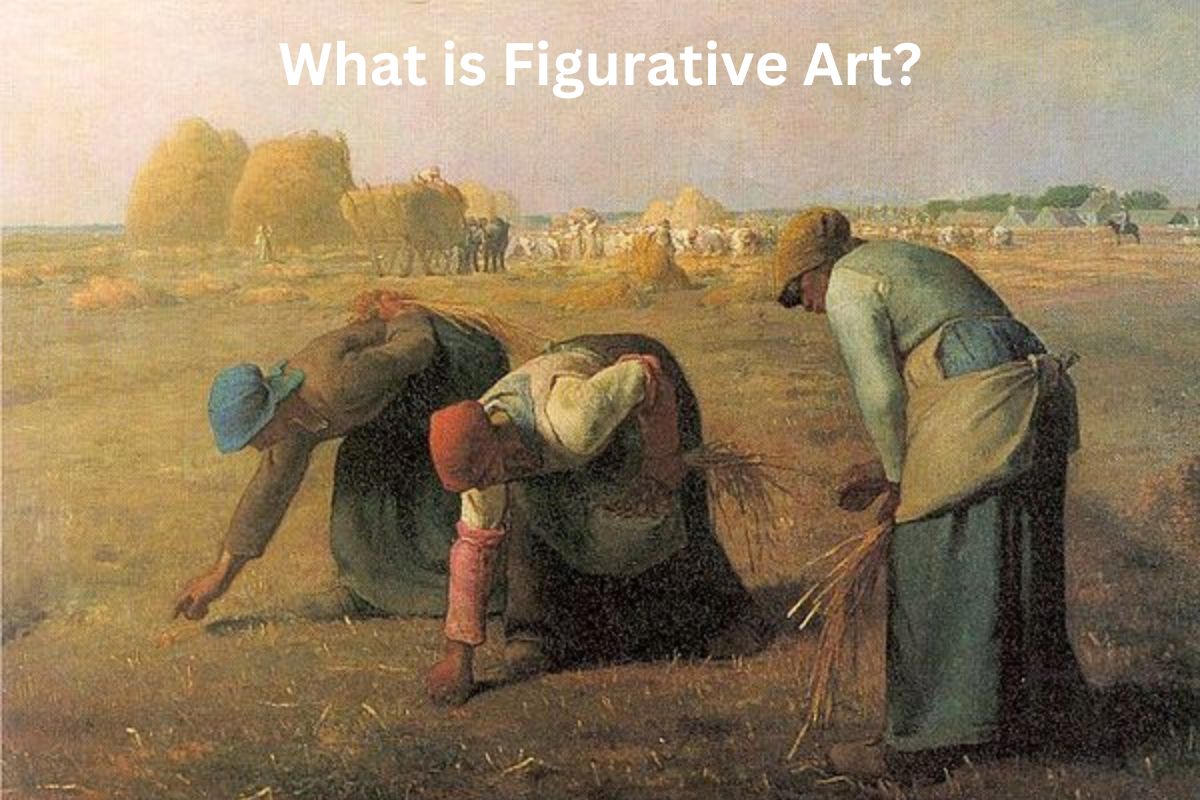Figurative art, a genre that has been deeply rooted in human culture and history, encompasses a diverse range of artwork that includes various forms and styles. It primarily seeks to represent the essence of objects, ideas, and people by incorporating outward appearances, emotions, and individual characteristics.
Often contrasted with abstract art, figurative art unearths beauty and symbolism through its recognizable subjects and meaningful implications.
The origins of figurative art can be traced back to the earliest human civilizations, with cave paintings and sculptures providing evidence of its timeless and universal appeal.
Throughout the ages, artists have employed a wide array of techniques to capture and convey the world around them, resulting in the rich and complex landscape of artistic expression as we know it today.
From Old Masters to contemporary creators, figurative art continues to evolve and resonate as a profound and influential force in the art world.
What is Figurative Art?
Figurative art, as the name suggests, refers to art that represents real-world objects, people, or events. It reflects a recognizable representation of the subject, often using realistic details, colors, and shapes.
On the other hand, abstract art is characterized by its lack of any apparent reference to the natural world. It often emphasizes color, line, and form, with the goal of encouraging viewers to look beyond the surface of the work and discover their own interpretations.
Representation and Realism
When discussing figurative art, it’s essential to understand the concepts of representation and realism. Representation in art refers to the act of portraying an object or scene, usually with varying degrees of likeness to the original.
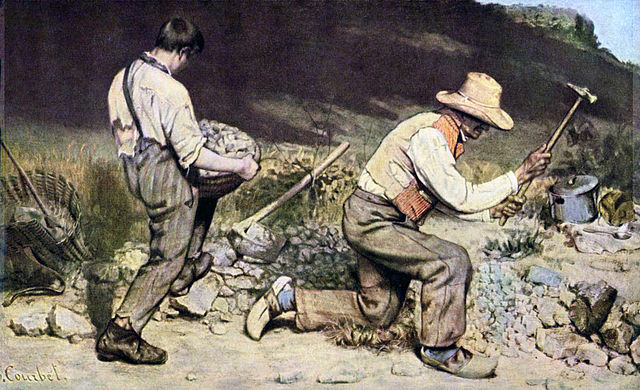
Realism, a subset of representation, is a style that aims to portray objects in a highly accurate, almost photographic manner.
Figurative art encapsulates various movements and styles, ranging from highly realistic to more stylized representations. Some key examples include:
- Classical art: A style that emphasizes precise, idealized depictions of subjects, often drawing upon ancient Greek and Roman art as inspiration.
- Impressionism: While still relying on recognizable subjects, this style is characterized by its loose brushwork and emphasis on capturing the fleeting nature of light and color.
- Expressionism: This emotionally charged, subjective style of figurative art uses distorted forms and intense colors to convey the artist’s inner feelings and perspective.
It is crucial to remember that figurative art is not synonymous with photorealism. While some artists choose to create highly realistic representations, others may opt for more stylized or abstracted approaches, emphasizing emotion or symbolic meaning.
In summary, figurative art is a diverse and multifaceted category of art that encompasses various styles, techniques, and levels of representation. Its core characteristic is the depiction of recognizable subjects, differentiating it from abstract forms of art.
Whether highly realistic or more stylized, figurative art offers artists and viewers alike a connection to the world around them, providing both inspiration and interpretation.
Key Elements in Figurative Art
Shape
In figurative art, shape plays a significant role in creating visual interest and depicting the subjects accurately. Artists use various shapes to represent the human body, animals, or objects.
Geometrical and organic shapes can be combined to achieve a balanced composition, while simple and complex forms contribute to the artwork’s overall scene.
Color
Color is an essential element in figurative art, helping artists to set the mood and convey emotions. The choice of colors can express the artists’ intentions and impact the viewers’ perception of the artwork.
Artists often use color harmonies, contrasts, and saturation to create depth and a sense of three-dimensionality.
Line
Line is another fundamental element in figurative art, serving as the foundation for the other elements. Line can be used to define shapes and create visual paths, guiding the viewer’s eye through the artwork.
Artists use lines of varying thickness, length, and direction to convey movement, energy, and emotion.
Light and Dark
Light and dark, also known as value or tone, are crucial in figurative art to create depth and volume. This element focuses on the contrast between highlights and shadows, helping to define the three-dimensional form of the subjects.
By manipulating the distribution of light and dark areas, artists can achieve a sense of realism and enhance the overall impact of their art.
Perspective
Perspective is a critical component of figurative art, as it helps create an illusion of depth and spatial relationships between objects within the artwork.
Employing linear and atmospheric perspective techniques, artists can effectively communicate their subjects’ position and distance relative to the viewer.
In summary, these key elements – shape, color, line, light and dark, and perspective – are essential for creating successful figurative art. By understanding and manipulating these formal elements, artists can convey their vision and engage viewers on an emotional and intellectual level.
Historical Evolution of Figurative Art
Cave Paintings
Cave paintings are one of the earliest examples of figurative art. These artworks depicted animals, human figures, and abstract signs on the walls of caves.
They served as a primary form of expression and communication for prehistoric societies, with some dating back to around 40,000 years ago.
Renaissance
The Renaissance played a significant role in the development of figurative art. It was a period of cultural rebirth that started in Italy during the 14th century and lasted until the 17th century.
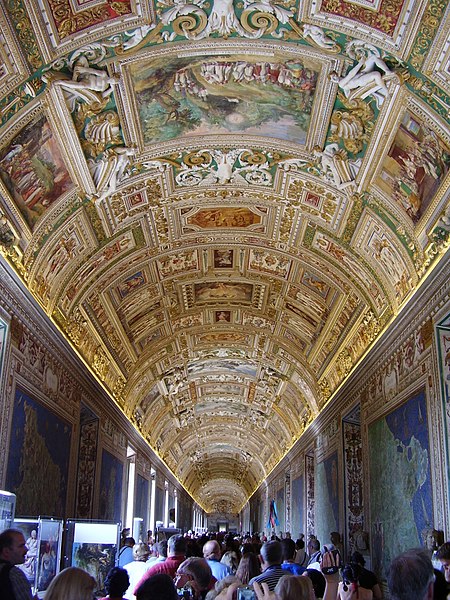
Renaissance art was characterized by a return to mimesis, the imitation of nature, and the human form gained prominence. Artists like Leonardo da Vinci, Michelangelo, and Raphael were known for their exceptional skills in depicting realistic human figures.
Mannerism
Mannerism was an artistic movement that emerged after the High Renaissance. This style was characterized by an elongation of figures, complex compositions, and a focus on technical virtuosity.
Emerging around 1520, it flourished until the late 16th century. It was notably distinguished from the more naturalistic Renaissance style, as it prioritized elegance and sophistication over strict realism.
Baroque
The Baroque period, spanning from the late 16th century to the early 18th century, was a reaction against the Mannerist style. Baroque art sought to create an emotional impact through its dramatic use of light, movement, and bold color.
Artists such as Caravaggio, Peter Paul Rubens, and Gian Lorenzo Bernini demonstrated mastery in capturing the human form and creating powerful, often religious, narratives.
Neoclassical Art
Neoclassical art emerged in the mid-18th century, influenced by the discoveries of ancient Roman and Greek art. It aimed to revive classical ideals and featured a return to more restrained and balanced compositions.
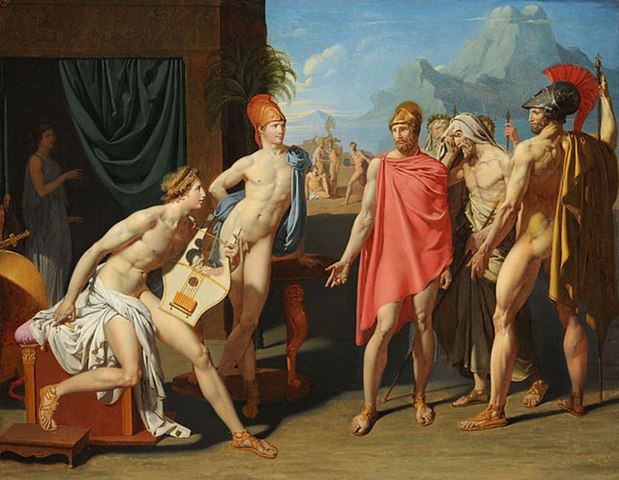
Neoclassical art often depicted historical and mythological subjects with an emphasis on moral and didactic themes. Key artists included Jacques-Louis David and Jean-Auguste-Dominique Ingres.
Modern Art
Modern art, which began in the late 19th century, marked a significant departure from traditional art forms. It encompassed a wide range of artistic movements and styles, such as Impressionism, Expressionism, and Fauvism.
Figurative art remained an essential component in modern art, but the focus shifted towards abstraction and a representation of inner emotions. Some prominent modern figurative artists include Pablo Picasso, Henri Matisse, and Amedeo Modigliani.
Prominent Figurative Artists
Pablo Picasso
Pablo Picasso was a Spanish painter and sculptor who reshaped the way we think about figurative art. Though primarily known for his role in developing Cubism, he also experimented with various styles throughout his career, always returning to figurative art.
His iconic paintings, such as “Les Demoiselles d’Avignon,” demonstrate his ability to capture the human form in a unique and thought-provoking way.
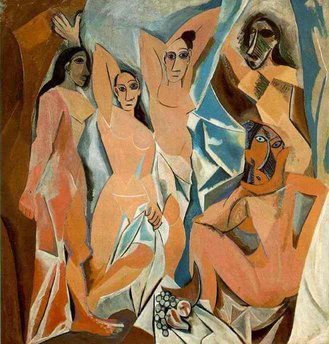
Edouard Manet
Édouard Manet was a French painter who played a crucial role in the transition from Realism to Impressionism. His paintings often explored socially relevant issues and the human condition.
Considered one of the pioneers of modern art, his works, such as “Olympia” and “The Luncheon on the Grass,” showcase a dedication to representing the human figure with unapologetic directness.
Vincent van Gogh
Vincent van Gogh was a Dutch painter whose work was distinguished by bold and expressive brushwork. Although he struggled with mental illness throughout his lifetime, he created some of the most iconic examples of figurative art, such as “The Starry Night” and “Sunflowers.”
His depictions of people, like the famous “The Potato Eaters,” demonstrate his focus on the human condition, exploring themes of suffering and compassion.
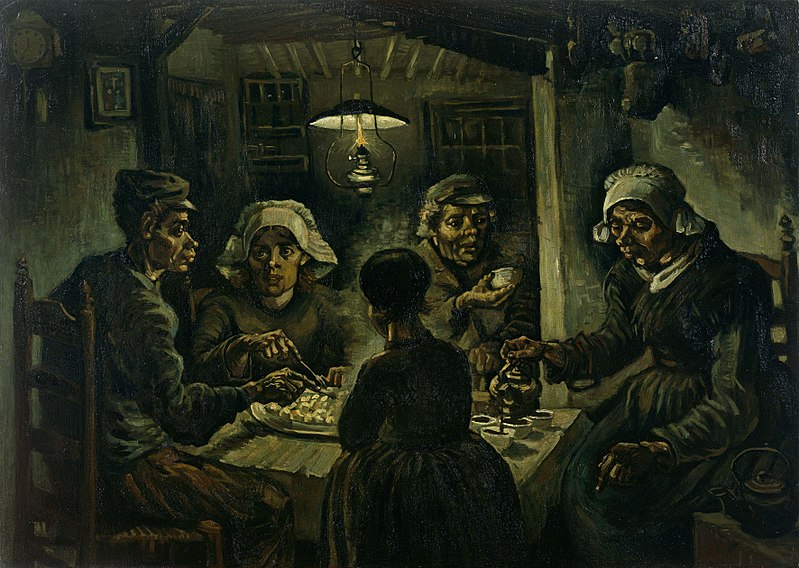
Francis Bacon
Francis Bacon was a British painter known for his distinctive, unsettling portraits that often conveyed a sense of isolation and psychological depth.
Heavily influenced by Surrealism and Existentialism, his paintings frequently feature disfigured human figures, as seen in his series “Three Studies for Figures at the Base of a Crucifixion.”
Bacon’s work continually redefined the boundaries of figurative art, pushing the limits of the human form.
Michelangelo
Michelangelo was an Italian sculptor, painter, and architect of the Renaissance who played a major role in defining Western art’s ideals.
His timeless works, such as “Pieta,” “David,” and the frescos in the Sistine Chapel, speak to the power of representing the human form.
In his sculptures, Michelangelo used marble to convey a sense of movement and emotion, elevating figurative art to new heights.
Alberto Giacometti
Alberto Giacometti was a Swiss sculptor and painter best known for his elongated and slender human figures. His work represents a stark contrast to the traditional fullness of bodies in figurative art, as seen in his piece “Man Pointing.”
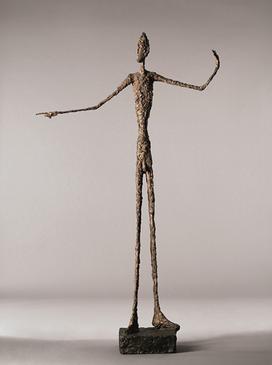
The unique physique of his sculptures and paintings reflect themes of existentialism and the human condition, resonating with audiences of his time and beyond.
Gustave Courbet
Gustave Courbet was a French painter and leader of the Realist movement. He challenged the traditional approach to figurative art, focusing on the tangible world and everyday people.
His paintings, like “The Stone Breakers” and “The Origin of the World,” often depict laborers and other marginalized individuals, shifting the focus from idealized beauty to the reality of human life, thus changing the course of figurative art.
Different Styles of Figurative Art
Neo-Expressionism
Neo-Expressionism emerged in the late 20th century as a response to the abstract and minimalist art movements. This style draws on the expressive nature of earlier Expressionist artists but incorporates modern themes and techniques. Neo-Expressionist artists often use bold colors, distorted forms, and emotional subject matter to convey their message.
Impressionism
Impressionism is an artistic movement that originated in late 19th century France. This style is characterized by its focus on capturing the fleeting and transient effects of light and color in the natural world.
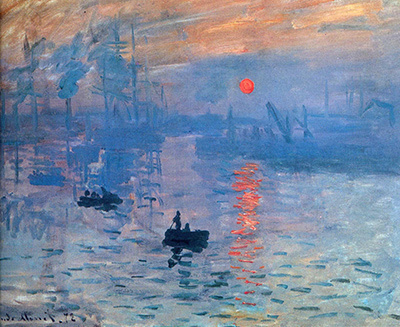
Impressionist artists use loose brushstrokes and vivid colors to convey the atmosphere and mood of a scene, often painting outdoors to directly observe their subjects.
Photorealism
Photorealism is a genre of art that emerged in the late 1960s and early 1970s. It involves creating highly detailed, almost photographic paintings and drawings, often through techniques such as airbrushing and meticulous brushwork.
Photorealist artists usually reference photographs to accurately reproduce scenes and objects in their work.
Cubism
Cubism is an avant-garde art movement that originated in the early 20th century. Pioneered by artists such as Pablo Picasso and Georges Braque, this style breaks down and reassembles objects and scenes into abstract, geometric forms.
Cubist artwork often features multiple viewpoints of a single subject, as if seen from different angles simultaneously.
Post-Impressionism
Post-Impressionism is a term used to describe the various art styles that developed in the late 19th and early 20th centuries, following the Impressionist movement.
While Post-Impressionist artists continued to emphasize the importance of color and light, they also experimented with form, composition, and subject matter.
Some notable Post-Impressionist artists include Vincent van Gogh, Paul Cézanne, and Georges Seurat.
Surrealism
Surrealism is an artistic and literary movement that originated in the 1920s. This style explores the irrational and subconscious mind, often incorporating dream-like imagery and unexpected juxtapositions.
Surrealist artists, such as Salvador Dalí, utilized various techniques, including automatism and symbolism, to create fantastical scenes and evoke an emotional response from the viewer.
Figurative Art in Contemporary Practice
Pop Art
Figurative art has seen various evolutions in contemporary practice. One key example is Pop Art, a movement originating in the mid-20th century. It drew inspiration from popular culture and media, often using imagery from advertising, comic books, and other mass-produced sources.
Leading artists such as Andy Warhol and Roy Lichtenstein incorporated recognizable, everyday images in their work, placing everyday objects and subjects into the spotlight. Pop Art’s distinctive style and embrace of commercial themes made it an accessible, appealing form of figurative art to a wide audience.
School of London
Another important development in the contemporary figurative art landscape is the School of London. This loosely connected group of artists, including Lucian Freud, Francis Bacon, and Frank Auerbach, focused on painting portraits, nudes, and scenes from everyday life.
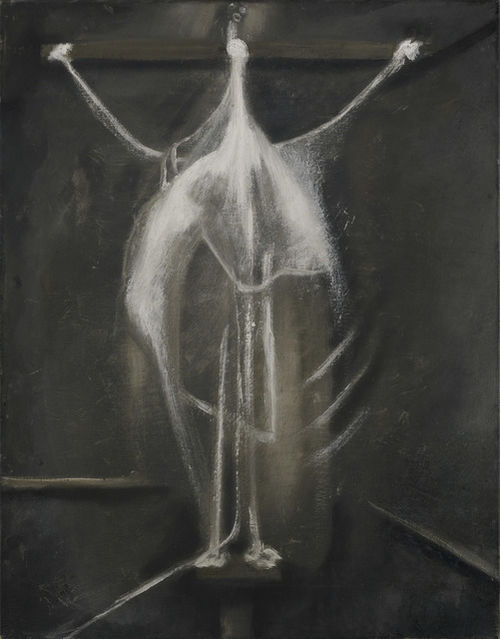
The School of London emerged as an alternative to the dominant Abstract Expressionism of the time. Works from this group are characterized by their emotional intensity, evocative use of color, and the human form’s strong presence.
Contemporary Painting
In recent years, contemporary painting has continued to embrace and adapt figurative art practices. Artists such as Jenny Saville, Cecily Brown, and Kehinde Wiley use figurative elements to create a dialogue with historical, social, and political themes.
These contemporary painters often experiment with different techniques, scales, and materials, further expanding the potential of figurative art.
New approaches to portraiture, including the re-imagining of traditional art historical genres, demonstrate the ongoing relevance and adaptability of figurative art in today’s art world.
Importance and Impact of Figurative Art
Figurative art holds immense value in the art world, as it emphasizes the representation of real-world subjects, particularly focusing on the human figure.
The incorporation of human figures, sculptures, and photography has played a significant role in portraying the complexities of the human experience, emotions, and social aspects.
One of the primary reasons figurative art is so important is its ability to communicate narratives and capture the essence of human emotions. Over time, artists have used the human figure to depict experiences, beliefs, and historical events, thus contributing to a collective understanding of our shared humanity.
In addition to paintings, sculptures have also been widely utilized in figurative art to represent the human form. Ranging from ancient Greek and Roman sculptures to more contemporary works, the three-dimensional aspect of sculpture offers representation and reflection of human anatomy, movement, and expression.
Photography, a more modern form of figurative art, enables the capture of fleeting moments, emotions, and gestures. As an accessible medium, photography has broadened the reach of figurative art, allowing artists to convey messages and emotions through elements such as composition, lighting, and posing.
Throughout art history, figurative art has been an instrumental tool in offering social commentary and documentation of historical events. Artists have often used their works to challenge norms, question societal values, and provide glimpses into the lives of different cultures and eras.
In summary, the importance and impact of figurative art are rooted in its ability to portray the human experience, express emotions, and engage in cultural and social discourse. The incorporation of human figures, sculptures, and photography has allowed artists to connect with their audiences on a deeper level, ensuring that this art form remains a relevant and essential aspect of the creative world.

